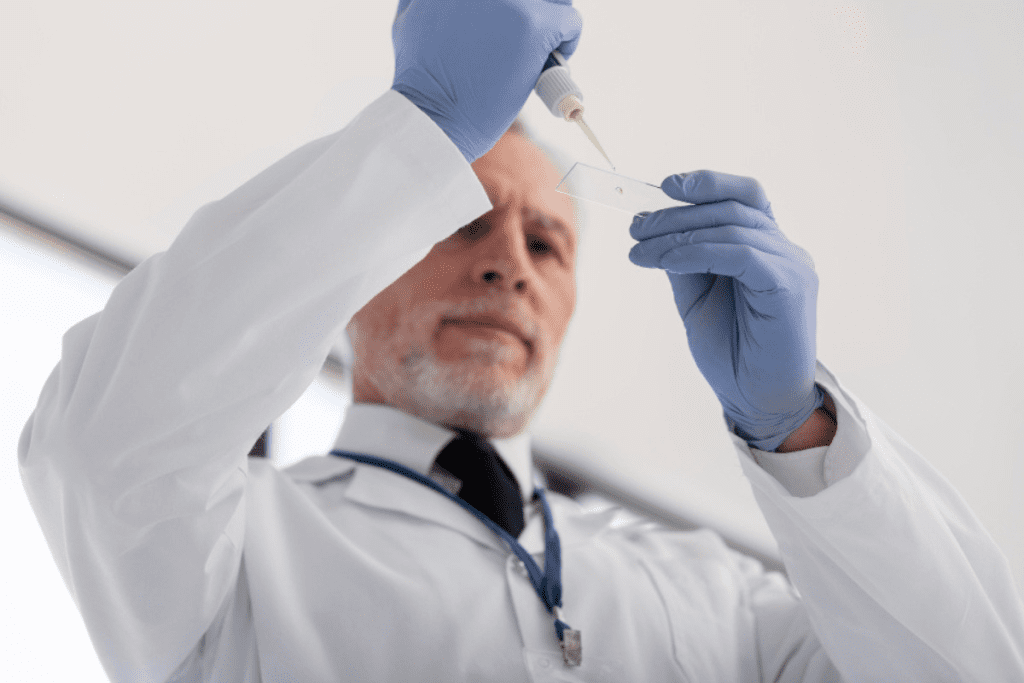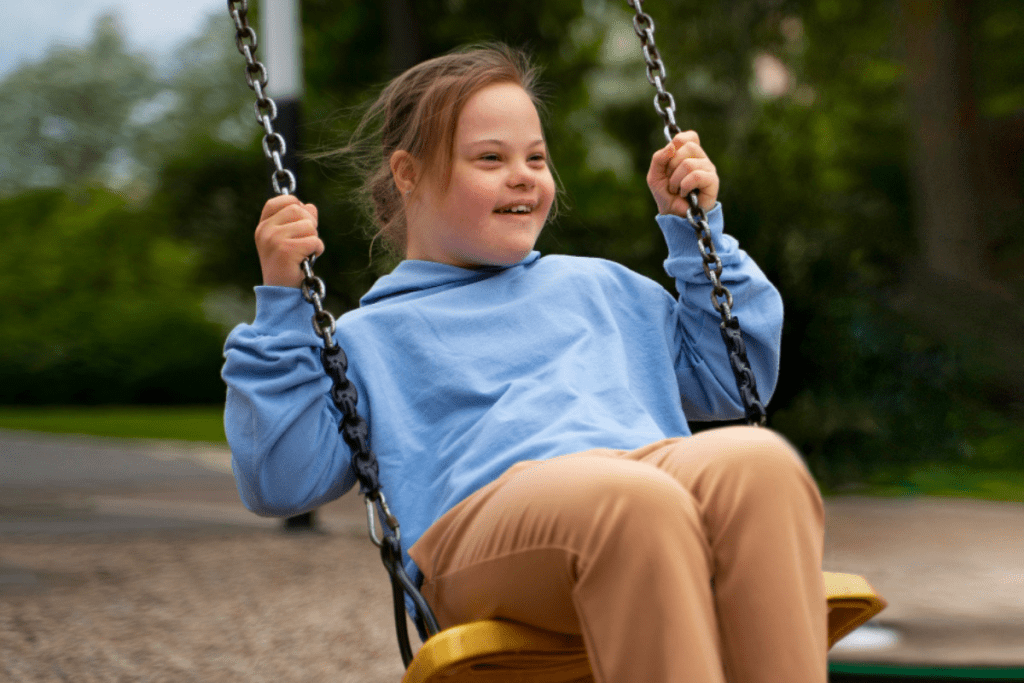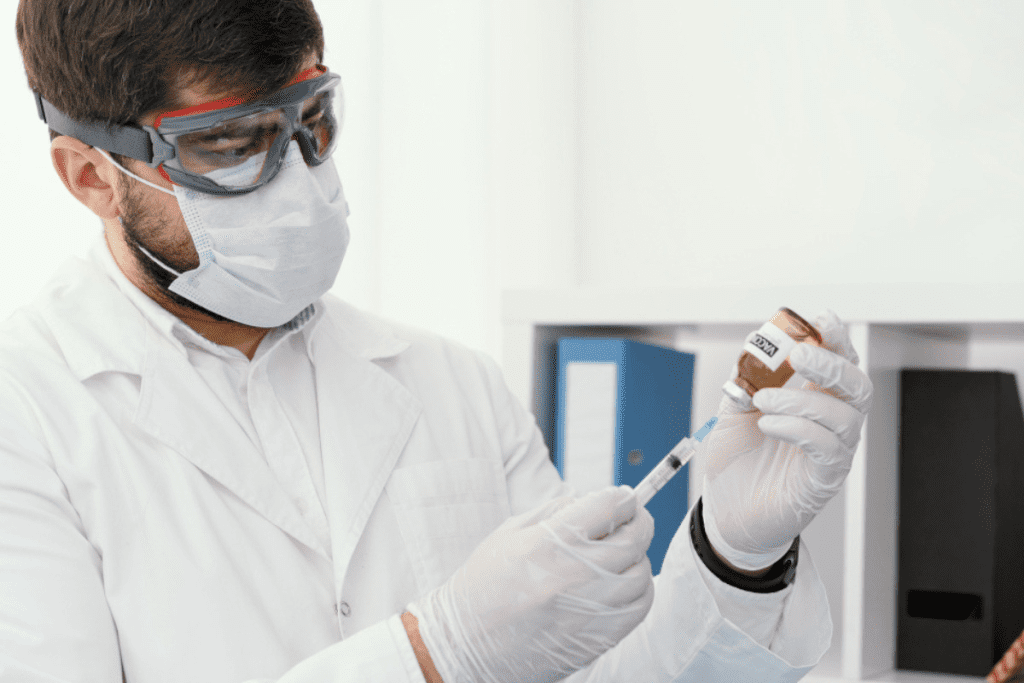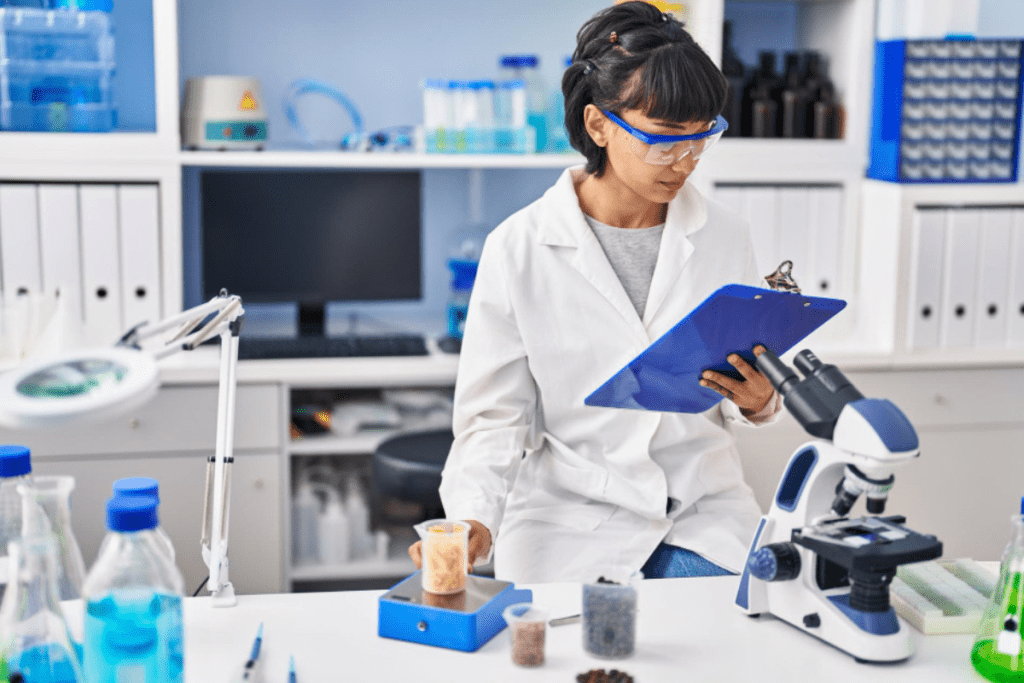Last Updated on October 20, 2025 by
Exploring gene therapy for autism is key. It’s in the early stages of research. This method targets specific genetic causes of autism, showing promise for treatment.

Recent breakthroughs in genome editing and transient gene therapies have opened doors. The first in-human clinical trials for monogenic disorders are underway. This marks a big change in diagnosing and caring for those with autism.
Gene therapy is not a cure for all autism yet. But it’s a big step forward. It helps address specific genetic forms of the condition.
Autism Spectrum Disorder (ASD) is deeply rooted in genetics, showing a wide range of symptoms and severity. Recent studies have found at least four different types of autism, highlighting its genetic complexity.

Autism Spectrum Disorder mainly affects social skills and behavior. It changes how the brain works, affecting areas important for social interaction. Early brain growth and changes in how brain cells connect also play a big role.
Genetics is key to understanding autism. Studies show that genes affecting brain connections can cause autism’s symptoms. Knowing this helps in creating better treatments.
Researchers are exploring innovative approaches like genetic treatment for autism to address the root causes of this complex condition. Autism spectrum disorder (ASD) is often linked to genetic variations that influence brain development. Advances in gene therapy and CRISPR technology are opening possibilities to correct or modify these variations at the molecular level. While still in early research stages, these therapies may provide future personalized solutions beyond current behavioral and medical interventions. Families and healthcare providers are closely watching progress in genetic treatment for autism, as it offers hope for more targeted and effective care options.
Genetics plays a big part in autism risk. Many genes contribute to autism, affecting how brain cells work and connect. This is why autism is so varied.
Understanding autism’s genetics is key for new treatments. By finding specific genetic causes, researchers can create targeted treatments for each patient.
Gene therapy is becoming a key treatment for autism. It works by changing genes to fix problems. We’ll look at how it does this and the methods used to get the genes into cells.
Gene therapy aims to fix autism by changing genes. It can replace bad genes with good ones, turn off sick genes, or add new genes to fight disease.
Gene editing technologies, like CRISPR-Cas9, have changed the game. They let us make exact changes to genes. This means we can fix the genetic problems that cause autism.
To work, gene therapy needs to get the gene into cells. This is done with vector systems, which are like delivery trucks for genes.
There are two main types of vectors. Viral vectors come from safe viruses that carry the gene into cells. Non-viral vectors use things like lipids or nanoparticles to deliver the gene.

Understanding genetic treatment for autism is key for patients and researchers. We’re just starting to explore this complex area.
Most gene therapies target simple diseases with a single genetic cause. Autism Spectrum Disorder (ASD) is different, with many causes. Early-stage research is vital for future progress.
Researchers are getting closer to understanding autism’s genetics. But there are big challenges ahead. They’re finding it easier to target specific genetic forms of autism.

Current treatments for autism focus on specific genetic causes. This is because autism has many different genetic roots. By targeting specific genetic mutations, researchers can create effective treatments for some.
But, autism’s wide range of causes makes a single treatment hard to find. As research grows, personalized genetic treatments might become more common. This could bring hope to families with autism.
We must keep supporting early research and stay hopeful about genetic treatments. This way, we can work towards a future where these treatments are available and effective for those who need them.
The SHANK3 gene is key to understanding Autism Spectrum Disorder (ASD). It helps in the development and function of synapses. Synapses are important for nerve cell communication.
SHANK3 haploinsufficiency happens when there’s not enough SHANK3 protein. This can be due to gene mutations or deletions. It leads to synaptic dysfunction, causing nerve cell communication problems, a key feature of autism.
Research links SHANK3 haploinsufficiency to severe neurological issues, including autism.
Clinical trials, like Jaguar Gene Therapy’s JAG201 program, focus on SHANK3-related autism. They aim to fix the genetic cause by targeting the SHANK3 gene. This could help restore normal synaptic function and improve autism symptoms.
Phelan-McDermid Syndrome is caused by SHANK3 gene deletions or mutations on chromosome 22. It leads to developmental delays, intellectual disability, and autism. People with this syndrome face big challenges in social interactions and communication.
The link between SHANK3 and Phelan-McDermid Syndrome shows gene therapy’s promise in treating autism. By focusing on the SHANK3 gene, researchers hope to find effective treatments for those with Phelan-McDermid Syndrome and other autism types related to SHANK3 haploinsufficiency.

As we learn more about the SHANK3 gene and its role in autism, we’re getting closer to creating targeted therapies. These could greatly improve the lives of those affected by autism.
The field of autism gene therapy is making big strides with new clinical trials. These trials are key to finding effective treatments for autism spectrum disorder (ASD). Gene therapy is showing great promise in this new era of treatment.
Jaguar Gene Therapy’s JAG201 program is a major highlight. It has an FDA Fast Track designation, showing its big promise. This program aims to treat specific genetic types of autism, making therapy more tailored.
The US FDA has given the green light for JAG201 in a Phase I clinical trial. This trial will check if JAG201 is safe and works well. It’s a big step for autism gene therapy.
By 2025, Jaguar Gene Therapy plans to start pediatric dosing plans in their trial. This is exciting news for families with autism. Including kids in the trial will help us understand how the therapy works for different ages.
We’re looking forward to the results of these trials. The JAG201 program is leading the way to better, more focused treatments for autism spectrum disorder.
CRISPR-Cas9 gene editing is a powerful tool in the fight against autism. It lets us make precise changes to our genes. This gives us hope for treating conditions that were once thought untreatable.
CRISPR technology is making big strides in studying and treating neurological disorders like autism. Its ability to edit genes with precision is opening up new research and treatment paths.
The CRISPR-Cas9 system comes from a natural defense in bacteria. It’s now a key tool for editing genes in neurological research. Scientists use it to study genes linked to autism by creating models that mimic human mutations.
CRISPR-Cas9 is being used to fix genes like MECP2, which causes Rett syndrome and is linked to autism. Studies show that fixing these mutations in stem cells could lead to new treatments.
Animal models, like mice, are vital in studying autism and testing treatments. CRISPR-Cas9 helps create models that closely match human genetic changes. This lets researchers study autism-like behaviors.
Though animal models are helpful, they have their limits. Autism is complex, and models can’t fully replicate the human experience. Yet, successes in animal models show CRISPR’s promise in treating autism.
As we keep exploring CRISPR’s role in autism research, we see both challenges and progress. The development of better gene editing tools is key to moving forward in this field.
Recent studies have found that autism spectrum disorder (ASD) has at least four biologically distinct subtypes. This is a big step forward. It shows that ASD is deeply rooted in genetics and varies a lot from person to person.
Researchers have made big strides in understanding the different types of autism. They use advanced genetic analysis and brain imaging to group ASD into distinct subtypes. Each subtype has its own set of biological markers and traits.
Key findings show that there are four main subtypes. Each has its own genetic and brain function characteristics. This new understanding could lead to more effective treatments tailored to each person’s needs.
The discovery of these subtypes is a game-changer for gene therapy. It lets researchers create treatments that target the specific genetic and biological issues of each subtype. This could lead to more effective treatments for ASD.
Targeted gene therapy aims to fix the underlying causes of ASD in each person. It’s a more precise way to treat ASD than using the same treatment for everyone. This could lead to better results for those with ASD.
As we continue, using subtype-specific data in gene therapy will be key. This personalized approach could greatly improve how we treat ASD. It will help tailor treatments to each person’s unique needs.
Gene therapy for autism is promising but faces big challenges. It’s not without its limits and ethical issues.
There’s no cure for autism through gene therapy yet. The disorder’s complex nature and many genetic causes make finding a single treatment hard.
Delivering genetic material safely to the brain is a big technical hurdle. Repeated treatments can help, but are hard on patients.
Gene therapy for autism raises many ethical questions. These include fairness in access, the ethics of genetic changes, and the need for strict safety and effectiveness checks.
In summary, gene therapy for autism is promising but needs to overcome technical and ethical hurdles. As research goes on, we must weigh its benefits against the challenges and ethical issues.
Gene therapy for autism is on the rise, thanks to new research and tech. At livhospital.com, we’re all about using the latest research to help. We’re excited about the future of treating autism, with big steps in genetic research and new treatments.
New tech is being tested to treat autism caused by certain genes. For example, CRISPR-Cas9 technology might edit genes linked to autism. This could be a big step in treating genetic autism.
New tech isn’t just about gene editing. Advanced imaging and artificial intelligence are also being used. They help us understand autism better and create more tailored treatments. This could change how we treat autism, making care more precise and personal.
The future of treating autism involves combining gene therapy with other methods. This mix could lead to better care for those with autism. For instance, adding gene therapy to behavioural and educational support might improve results.
Some ways to mix gene therapy with other treatments include:
As we look ahead, we must keep researching and developing new treatments. This way, we can give people with autism the best care possible.
“The mix of gene therapy with other treatments is a big leap for autism care. It’s a hopeful sign for better results for those with autism.”
Expert Opinion
Gene therapy for autism is in its early stages. It mainly focuses on specific genetic types of autism. Even though it’s not widely used yet, new studies and genetic tech advancements show great promise.
Research is making gene therapy a possible treatment for autism. Jaguar Gene Therapy’s JAG201 program and CRISPR-Cas9 tech are leading the way. These are just a few examples of the new methods being tried.
Gene therapy’s future in treating autism is bright. It could tackle the genetic roots of autism. As we learn more about autism’s genetics, we’ll see more effective treatments.
Gene therapies might soon help many diseases, including autism. With ongoing research and progress, we’re on the verge of breakthroughs. These will offer better treatment options for those with autism.
Gene therapy for autism aims to treat the condition by changing or replacing genes. It uses special systems to carry healthy genes to cells. This helps cells work right
Autism spectrum disorder is caused by many genes working together. New research has found different types of autism. This helps doctors find better treatments.
Gene therapy adds healthy genes to cells. Viruses are used to carry these genes to cells. This lets cells work as they should.
Genetic treatments for autism are just starting. They mainly help certain types of autism. More research is needed to help more people.
SHANK3 haploinsufficiency happens when the SHANK3 gene is missing. It’s linked to Phelan-McDermid syndrome. This rare disorder causes autism-like symptoms.
Jaguar Gene Therapy’s JAG201 program is a trial for SHANK3-related autism. It plans to start testing on kids in 2025. People are hopeful it will help a lot.
CRISPR technology is being used to change autism genes in research. It has worked in animals, but there are challenges to overcome.
Finding four autism subtypes helps tailor treatments. It means doctors can give better care to each patient.
Autism gene therapy faces many challenges and ethical debates. These need to be solved through research and careful thought.
Autism gene therapy research is looking good, with new technologies on the horizon. These could bring new treatments and better results for patients.
Subscribe to our e-newsletter to stay informed about the latest innovations in the world of health and exclusive offers!